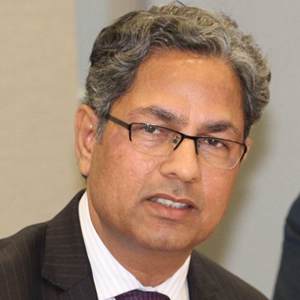
Eliminating rural poverty has emerged as one of China's major areas of focus towards building a moderately prosperous society in all respects. Uplifting rural poor remains central to the fulfillment of the Chinese dream after urban citizens of China have already benefited from infrastructure development which is now attracting rural migrants. Rural development is seen as the most apt way of managing the onslaught of rural migrations overloading China's excellent urban infrastructure.
The second session of the 13th National People’s Congress in March saw Premier Li Keqiang's government work report reflecting this focus as it outlined various plans for poverty alleviation efforts for 2019. What makes this shift so interesting is the fact that China's defense budget will be seeing a decrement by getting an increase of only 7.5 percent this year compared to 8.1 percent last year. Does this mark a so-called shift from growth to equity in China's development model?
Clearly, addressing extreme poverty in rural areas on an urgent basis has emerged this year as a special focus for China's leaders. The government work report for this year seeks to evolve an integrated and holistic approach to accelerating work on various poverty alleviation programs by aligning these to other plans for developing local industries, boosting employment, education, social security, healthcare, and so on. Closely connected to rural poverty alleviation are other development programs for environmental protection through using new infrastructure construction, garbage and sewage treatment, agricultural production, waste management, and further expanding the 'toilet revolution' to improve living conditions in China's rural areas. The work report also outlines plans to further fine-tune the equilibrium between rewards and subsidies for rural public works in order to support ‘beautiful countryside' projects by supporting community organizations engaged in rural development.
Premier Li Keqiang also announced plans to make more progress in granting permanent urban residency to people who have moved to cities from the countryside and work toward making basic urban public services cover all permanent urban residents. With focus on China's future, high priority is attached to improving conditions of rural schools for providing higher-quality education in rural areas and also for rural migrant workers in urban centers. The government work report proposes to launch Internet Plus Education to promote access to high quality resource sharing for all while ensuring reasonable school fees whether it be a public or private institution.
Premier Li also underlined issues regarding full payment of salary to teachers. In its drive to build world-class education institutions, China continues to maintain an impressive benchmark of spending four percent of its gross domestic product on education. The central government's budget allocations for education last year crossed an impressive benchmark of RMB 1 trillion. There has also lately been added emphasis on promoting art and literature so as to enrich the intellectual and cultural life of its people. Ideas also matter; in this regard, there has been enormous engagement of the press, publishing, radio, film, television, internet and the archival industry in promoting high quality, easy access to education for all.
Equal focus also remains on providing healthcare with special attention being provided to elderly care. In this, medical care is seen as closely linked to catering to needs for housing and food security for all. For this, China has been increasing its spending on health care and medical research.
Starting from the informal summit meeting of Xi Jinping and Narendra Modi in Wuhan last April, there has been much better appreciation of each other. This has seen some positive momentum in their interactions with bilateral trade showing an impressive 18 percent growth for last year. More recently their rapprochement is being further facilitated by President Trump's whimsical trade wars against one and all. What is most important is to underline the largely apolitical nature of working together in these specialized sectors for improving ground level facilities for their billion plus populations on both sides. Both sides can explore their complimentary niche advantages that can benefit the other side. This can indeed also help create pro-active constituencies for tackling other complex matters that have stymied and dwarfed their potential for working together.
India for instance, had last year launched a similar healthcare initiative, Ayushman Bharat, with the provincial governments being their main nodal hubs for implementation and administration of this nationwide program. Clean India (Swaccha Bharat) has been the other big program of the Modi government with focus on building 11 million hygienic toilets across 4,042 cities and towns. Indeed, healthcare, education, and cleanliness -- which have emerged as the main focus for both China and India -- can open avenues for partnerships for building moderately prosperous societies on both sides. These can also greatly enhance the dignity and safety for their people and facilitate sectors like tourism, thereby proving to be major driving forces for their economic development. Premier Li Keqiang's government work report shows how both China and India face similar challenges and potential opportunities, and should ignite debates for enhanced cooperation between these two Asian giants.
___________
SWARAN SINGH is a professor with Jawaharlal Nehru University (New Delhi) and adjunct senior fellow with the Charhar Institute (Beijing).